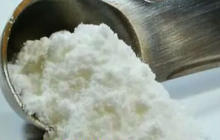On this first day of the Canadian Obesity Summit, I had the pleasure of attending a workshop discussing the impact of sugar sweetened beverages on our health, and the impact that the powerful marketing of beverage companies has on the choices we make.
We harp on sweetened drinks as a source of ’empty calories’, meaning that sugary drinks provide carbohydrates in the form of simple sugars, without providing much in terms of other nutritional value. Dr Tom Warshawski pointed out to us that studies show that when a person drinks a sugary drink, they do eat less calories than they would have if they had consumed water instead, but this compensation is incomplete – meaning that the overall calorie intake is still higher with the sugary drink than it would have been if the person had consumed water. He also pointed out that sugary drinks do not help us to feel full, meaning we are likely to eat sooner (and therefore more overall) than if we had eaten something (healthy) instead of drinking the sugary drink in the first place.
Perhaps some of the most poignant information that came out of this session was the discussion about the powerful marketing campaigns that push sweetened beverages upon us. In 2004, the US junk food industry spent nearly 1200 times more money than the government campaign promoting the ‘5 A Day’ fruit and vegetable campaign. In 2006, $4 billion dollars was spent in the US on soft drink advertising – imagine if this kind of funding could be put towards dietary counseling for people who struggle with their weight! There is a particular drive by the industry to target youth, as this ‘ensures the future’ of their brand. 🙁 From color to name to font to location of vending machines to where/when/how they advertise … it’s all a premeditated psychological orchestra geared to make us consume more.
Consumer warfare abounds in other ways, too. Over the last 30 years in Canada, fresh fruits and veggies have gotten more expensive, whereas sweetened beverages have gotten cheaper. When deciding between purchasing pop vs water, one can’t help but notice that 1L of pop costs an average of $1, much less than the average of $2.50 per L of bottled water (how exactly does taking water and adding sugar and chemicals to it make it cheaper??).
The industry had their say during this meeting as well – in fact, many employees of Coca Cola were in attendance at the workshop, and this served to generate quite interesting debate! On that note, there has been a lot of discussion as to whether or not it’s appropriate to have food industry members like Coke and McDonald’s present (and supporting) the Canadian Obesity Summit. In my opinion, it’s important to have all stakeholders at the table as we discuss obesity in Canada, especially the food industry – for without their cooperation, our struggles against our toxic obesigenic environment are unlikely to change.
Dr Sue Pedersen www.drsue.ca © 2013
Follow me on Twitter for daily tips! @drsuepedersen












